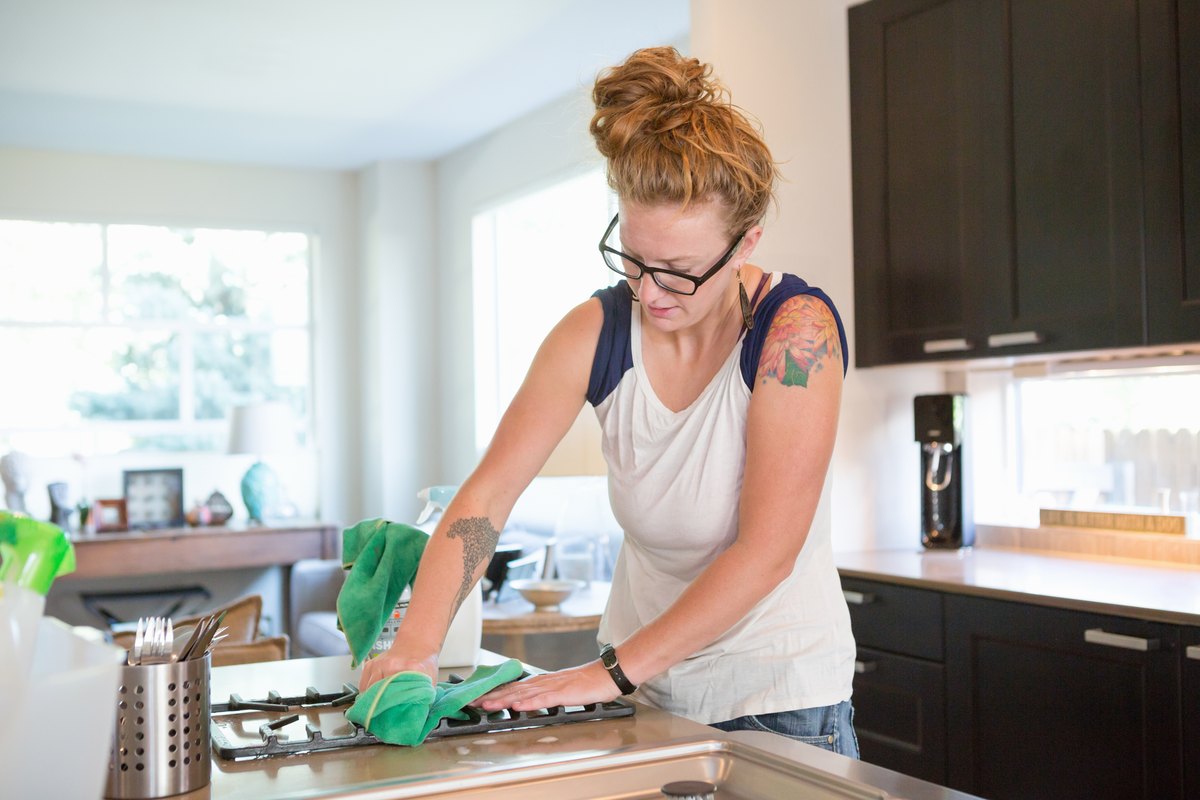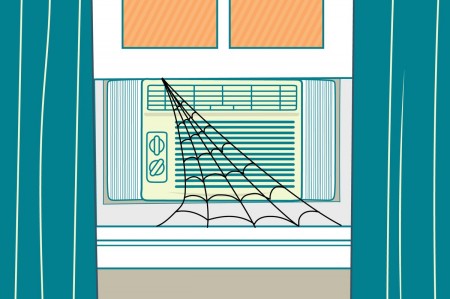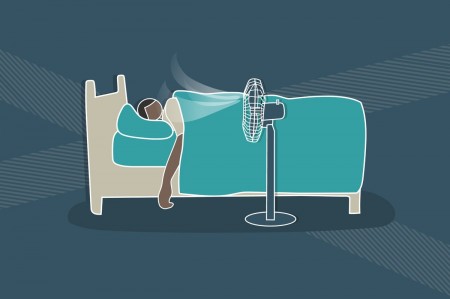
Advertisements
Quick: What's the first thing you think of when you hear air pollution? Probably a hazy, hazardous smog on the horizon, produced by power plants, industrial facilities and cars, right?
Video of the Day
But studies show that the level of many air pollutants may be more than five times (and in certain cases, 100 times) higher indoors, according to the Agency for Toxic Substances and Disease Registry (ATSDR).
That's a big problem for your pulmonary health, because more than 80 percent of your time is spent inside, says pulmonologist Panagis Galiatsatos, MD, MHS, director of the Tobacco Treatment Clinic at Johns Hopkins Bayview Medical Center.
"If you're indoor air quality isn't good, you're not going to be breathing well," Dr. Galiatsatos says.
Indeed, poor indoor air quality can cause or contribute to the development of infections, lung cancer and chronic lung diseases like asthma, according to the American Lung Association (ALA).
While air filters can effectively eliminate indoor air pollutants, they can also cost a pretty penny. Luckily, they're not your only option when it comes to optimizing indoor air.
Here, Dr. Galiatsatos shares nine simple strategies to improve indoor air quality without an expensive air purifier.
Tip
There are many possible sources of indoor air pollution. Some indoor contaminants include the following, per the ATSDR:
- Asbestos
- Biologic agents (animal dander, bacteria, cockroaches, dust mites, mildew, molds, pollen and viruses)
- Building materials
- Radon (released when uranium in the soil or rock — on which homes are built — breaks down)
- Tobacco smoke
- Wood stoves, gas ranges or other heating devices
1. Quit Smoking
"The number one contributor, still to date, of bad indoor air quality is smoking," Dr. Galiatsatos says.
While we all know puffing poses significant health hazards to smokers, secondhand smoke, which degrades indoor air quality, puts nonsmokers at risk for lung-related illness too.
That's because secondhand smoke contains toxic and carcinogenic chemicals including formaldehyde, benzene, vinyl chloride, arsenic ammonia and hydrogen cyanide, according to the ALA.
Even smoking outdoors doesn't solve the indoor air quality problem, because people can still carry residual thirdhand smoke inside the house, Dr. Galiatsatos says. Thirdhand smoke can stick to surfaces for weeks to months and re-enter the air, per the ALA.
If you want to kick the habit (or help someone else quit), the ALA's Freedom From Smoking program is a good place to start.
2. Clean and Maintain Gas and Wood Stoves
"As a lung doctor, I ask patients, 'how do you cook your meals?'" Dr. Galiatsatos says.
That's because wood and gas stoves can emit harmful fumes, that, when breathed in over time, can lead to lung-related illnesses. "When people hear of a lung disease like COPD, the whole world reflexively thinks, smoking, but the second cause of it is this — how you cook," he says.
Advertisements
Indeed, more than half of American households cook with gas ranges, which can release respiratory irritants like nitrogen oxide, according to the ATSDR.
And research demonstrates that children living in homes with wood stoves — which can emit carbon monoxide, oxides of nitrogen, particulates and hydrocarbons — have a greater risk for respiratory symptoms, per the ATSDR.
That doesn't mean you can't safely use gas or wood stoves, Dr. Galiatsatos says. You just need to make sure they're well cleaned and maintained.
Check with the manufacturer for proper care instructions. Following these directions for cleaning and maintenance can ensure that your cooking method isn't meddling with your indoor air quality.
Related Reading
7 Tips for Living Well With COPD
3. Improve Ventilation
If you have a plethora of indoor pollutants, opening windows and doors might help flush them out.
Proper ventilation helps to lower levels of indoor contaminants, thus improving indoor air quality, according to the Environmental Protection Agency (EPA).
However, before you crack open the windows, carefully evaluate your surroundings. "I have a patient who lives behind a massive bus station, so if they open the windows, they'll get all the automobile fumes," Dr. Galiatsatos says.
In other words, be smart: If the air quality isn't good outside, don't let it indoors.
4. Clean Your Home Often
From dead skin cells to dirt from outdoors, dust is an unpleasant potpourri of particles circulating around the air inside your home. "And if dust is on the floor or your countertops, it's getting breathed into your lungs," Dr. Galiatsatos says.
Fortunately, frequent dusting and vacuuming can substantially improve indoor air quality. "Keeping a hygienic house goes a long way toward being able to breathe well," Dr. Galiatsatos says.
5. Use Nontoxic Household Cleaning Products
In your quest to keep your indoor space spotless and dust-free, pay attention to the cleaning products you use to prevent harm to your pulmonary health.
Certain cleaning agents are terribly toxic and can irritate your lungs, Dr. Galiatsatos says. Sometimes just the scent of a cleaning solvent can aggravate a person's nostrils or cause shortness of breath, he says.
While potent disinfectants are necessary to sanitize hospital settings, you don't need this caliber of chemicals to clean your home. There's a huge distinction between disinfecting and cleaning, and unless someone in your home is sick and actively spreading germs, you don't really need to do the former, Dr. Galiatsatos explains.
The takeaway: Stick to safer, less-hazardous cleaning agents. And if you must use strong disinfectants or aerosols in your home, Dr. Galiatsatos recommends wearing a face mask while cleaning and then letting the space air out for a few hours.






